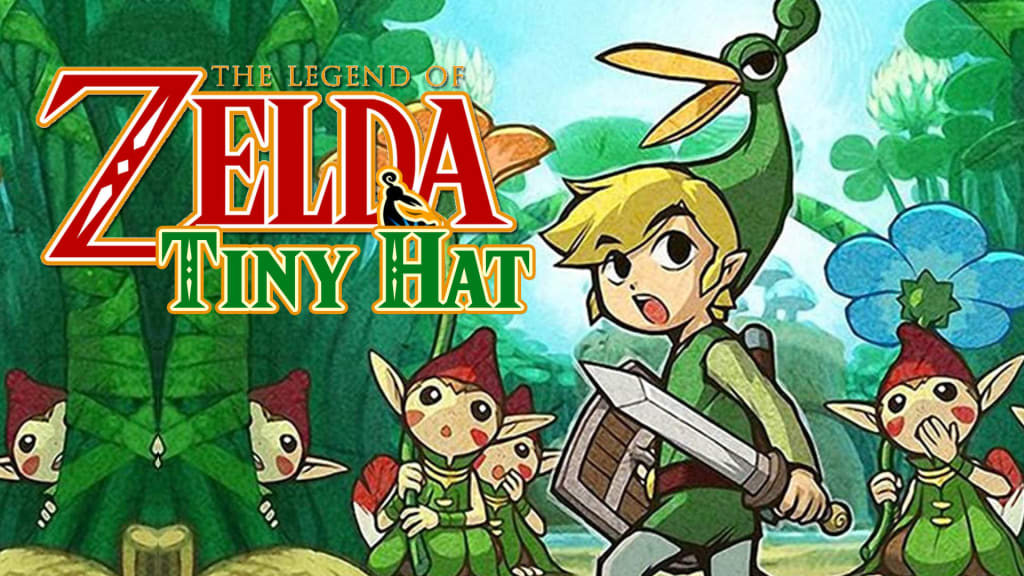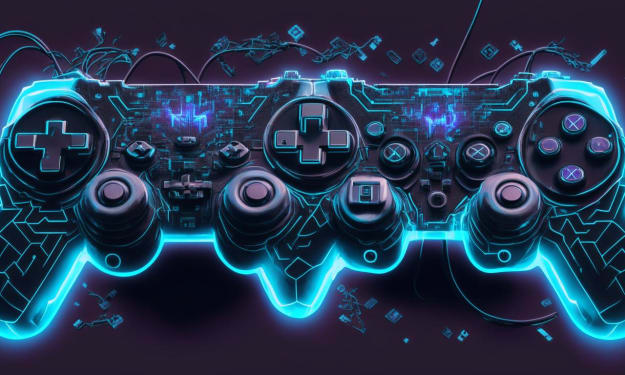Legend of Zelda: Tiny Hat - Overlooked or Underwhelming?
Taking a look at that one Zelda game for the GBA you probably forgot about.

The Legend of Zelda: Minish Cap for the Game Boy Advance is one of the only mainline Zelda games I have not played yet. (the others being Zelda II, the Oracle games, and the DS duology) I’d been meaning to get to Minish Cap for a while, and finally found a copy under $100, so I guess now is the time.
This game feels a bit underwhelming to me, I think in part because I’ve played so many other Zeldas. Minish Cap is another Zelda. You explore the world, collect new items, do some dungeons, and fight some bosses. It’s very much the tried and true Zelda formula. Which isn’t to say it’s bad, I don’t think it is, but it feels like something I’ve seen before. The game is also pretty light on story, which is also not necessarily bad, but it does contribute to the game feeling less unique. There’s not a whole lot of new characters. We do see a lot of returning characters, like this is the third and final appearance of Tingle in the main series. And I do think it’s fun to see Wind Waker and Ocarina characters in a top down pixel-art style. But I wish there were some more memorable original characters, since seeing familiar faces makes this entry kind of blend into the rest of the series.
The main new mechanic is the titular Tiny Hat which gives you the ability to shrink. This allows you to access certain areas and solve puzzles, as well as interact with the game’s new race, the Picorri. And this is the main draw of this game for me. The Picorri or Minish, are these tiny Thumbelina size creatures that exist throughout the world. The residents of Hyrule are mostly oblivious to their existence, despite sharing the same living spaces, the Minish living in mouse-like holes throughout the world. This is a very fun and whimsical fairy tale idea that fits beautifully into the world of Zelda. Seeing how the Minish have made homes out of household objects, and plants is delightful.
There’s a quest where you get the classic Zelda item, the Pegasus Boots, from this shoemaker, who thinks that he keeps making shoes in his sleep, but actually the Minish who live in his house help him make shoes overnight. Taking the classic The Elves and The Shoemaker story and adapting it into the Zelda world, while also tying it into one of the major items you need to progress, is so brilliant and charming and memorable.
The over-world seems kinda small for a Zelda game, but from the eyes of the Minish, it is enormous. You also sometimes fight a regular enemy as a giant boss from the Minish perspective. Everything about the shrinking mechanic and the secret hidden world of the Picorri, I absolutely loved. I only wish there was more of it. Like I would've loved to see more done with the fairies. Zelda fairies are traditionally around the same size as the Minish, so I wondered what their relationship to them might be like. Sadly, it never came up, which I feel like is a missed opportunity. For example, what if there was a cave that you visit at human size and there is just a single fairy, but if you return to the cave at a Minish size that same fairy appears as a Great Fairy, and gifts you an item or something. A moment like that could be really cool.
Another new mechanic unique to Minish Cap is Kinstone Fusing. Throughout the world you can find these various Kinstone shards, which can then be fused with shards held by the various residents of Hyrule. Once fused, the world will be slightly altered in various ways. Sometimes something simple like a chest will appear, sometimes a new area will open up, or sometimes something more significant will happen that advances a quest, like these Gorons appearing to break through a wall in a mine. I was sceptical at first, but found that I really enjoyed this system. Sure, a lot of the rewards you get are trivial, like some rupees or even another Kinstone. But this system encouraged me to explore the world and talk to different NPCs, which led to more exploring and more talking to NPCs. It made Hyrule feel like it always had something new to discover, just around the corner.
The final boss is a real sonuvabitch. So before even reaching Vaati, the main villain of the game, you have to dash through this short gauntlet of rooms and enemies before this bell tolls three times and Vaati completes his evil plan. This becomes infuriating when you have to fight these three Darknut style enemies, who are already pretty tough one on one. But three at once is a damn pain. There isn’t really an easy strategy to these guys either, you kinda just have to swing your sword at them and hope for the best. You sort of have to wait for them to attack before they are vulnerable as they block any head on attacks. The blocking is also multiplied by three. What’s made worse, is that if you take too long fighting these guys, the final bell will toll and you will game over, without even reaching the final boss room. I learned this the hard way, which was fun. It didn’t even occur to me that that could even be possible, since each room up to that point plays an unskippable but short cutscene of the bell tolling when you first enter. I foolishly assumed this was a scripted event, but no, there is a time limit. So you have to be aggressive fighting these guys, putting yourself at risk of taking more damage, before you even get to the final boss, which can put you at a major disadvantage. I honestly struggled with these guys way more than Vaati, who is also not an easy fight. It can take a while to figure out what specific items you need to use, items which haven’t really been used prominently since the first couple of dungeons. And then after the second phase, you save Zelda and think the fight is over; Surprise third phase, bitch! And if you die at any point during this whole sequence, you gotta do the whole thing again. Which means fighting those goddamn Darknuts again, watching the cutscenes which no longer carry any dramatic tension again, and doing all three phases of the Vaati fight again. This whole process took me many, many tries. I struggled with this more than almost any other Zelda final boss. You'd think having played 10 other Zelda games previously would give me an advantage, but not really. At one point I took a break and did some more exploring to get a few more heart pieces before trying again, and still struggled quite a bit. Boy, what a pain.
The story is pretty simple and kind of just amounts to telling the tale of how Link got his hat. This is a prequel after all, and the earliest entry chronologically in the timeline at the time of the game's release. Which sounds like an extremely trivial adventure, even more so after Skyward Sword comes out and is set before Minish Cap, yet Link already has a hat in that adventure. But that’s kinda why it’s better to just sort of ignore the timeline altogether. There are some unique elements like Vaati being the main villain instead of Ganon, and the Four Sword being the main sword instead of the Master Sword. But these elements aren't really very deep or interesting, so they don't make the game stand out in the way that I hoped they would. Ezlo, the talking Tiny Hat who acts as your companion, is pretty fun and never comes off as annoying. But there isn't a whole lot to his character either. Having played 10 other Zelda games already may have contributed to my lack of feeling whelmed. But there are moments that I did really enjoy, like pretty much everything involving the Piccori. I just wish there was more of that stuff.
So despite some whimsical elements that I really really liked, I think that Zelda: Tiny Hat, falls a bit short.
But what do you think of Minish Cap? Is it underrated? Does it suck? And which Zelda game should I play next? Let me know in the comments!
About the Creator
Danny Duff
Danny Duff is a writer and filmmaker. He likes writing about movies, TV, and sometimes video games.






Comments
There are no comments for this story
Be the first to respond and start the conversation.